Recent Change of Edible Bird’s Nest Trade in Sarawak: The Introduction of New Method and Sustainable Collection [Tetsu Ichikawa]
Recent Change of Edible Bird’s Nest Trade in Sarawak:
The Introduction of New Method and Sustainable Collection
Tetsu Ichikawa (Department of Tourism, Rikkyo University)
Introduction The purpose of this paper is to report and analyze on the transformation process of the edible bird’s nest trade in Sarawak, Malaysia. Recently the edible bird’s nest trade has been booming in Malaysia (e.g. Lim & Earl of Cranbrook 2002, Voon 2012, Chew 2013). This influx in trade is influenced by factors including: the Chinese food culture, the Chinese perception of health, the ecological knowledge of local people, and the multi-ethnic network in this area. These characteristics are significant in the trade of edible bird’s nest in Southeast Asian countries, including Sarawak. This paper will analyze the characteristics of the contemporary edible bird’s nest trade in Sarawak from three viewpoints: the commodity chain, ecological knowledge and the ethnic relationship in this area. By considering these three viewpoints, this paper will examine how the edible bird’s nest trade is transforming its nature in the Sarawak region through the introduction of a new method for collecting the edible bird’s nest. Since globalization can no longer be ignored in contemporary world, many scholars in humanities and social sciences have begun to consider how to integrate a global phenomenon into their research. This academic trend has influenced cultural anthropological studies, whose main research method is to conduct fieldwork in relatively small communities. However, anthropologists have long recognized the importance of a relationship between the micro scale communities and the macro scale phenomena prior to globalization studies prospering within the field of humanities and social sciences. Since the 1980s, the worldsystems theory and the articulation theory have influenced socio-cultural anthropological research, with anthropologists seeking to understand their fieldwork date by considering the world-systems theory or transnationalism studies (cf. Lewellen 2002, Kearney 2004). It is not easy for anthropologists to research a large-scale society to enable them to understand their field data. As ethnographic fieldwork in relatively small-scale communities is the main research method for anthropological research, anthropologists are faced with searching for a research framework to articulate their micro-scale ethnographic data and its macro-scale background. Should anthropologists research a large-scale society, such as a world system or a transnational phenomenon; it is necessary for them to consider and understand the interconnectedness between micro level communities in which they conduct their fieldwork and the macro level settings that surround the research site. Some scholars (cf. Marcus 1995, Brettell 2003) whose work include tracing population migration and commodity chain by conducting multi-sited ethnographical methods, can be understood as contributing towards overcoming the above problems. By reflecting on this academic tendency, some studies analyze the characteristics of particular products’ and their trade in world markets by researching not only the commodity chain but also the peculiarity of their ecological environment and the political economy, where the products are produced (e.g. Collins et al. 2000, Wadley 2005, Akamine 2010, West 2014). To understand the extended Chinese network from the local context, such research methodologies are instructive helpful. Utilizing this framework, this paper will report on the edible bird’s nest trade in contemporary Sarawak, Malaysia and discuss how ethnic Chinese in Sarawak have introduced a new method for collecting edible bird’s nest and changed the trade network in this region. To analyze the above issues, the paper will focus on three topics: the transformation of the commodity chain, environmental knowledge of local peoples, and the ethnic relationship in Sarawak. In discussing these issues, the paper will concurrently consider the contemporary characteristics of the edible bird’s nest in Sarawak trade and how the ethnic Chinese and other local people in Sarawak are utilizing a high-biomass natural environment in this region. What is edible bird’s nest? Edible bird’s nest, known as yan wo (燕窝) in Mandarin and sarang burung in Malay, is a rare and expensive Chinese food delicacy. Although the Chinese word yen means swallow, this delicacy is not a swallow’s nest, but a swiftlet’s nest. The swiftest is a biologically different species to the swallow. Among the members of the species, only two groups, which are Aerodrams Maximus and Aerodrams Ficiphagus , build edible nests by using their saliva. It is commonly believed that the swiftlets use sea weed to build their nests, thus their nests also taste like seaweed. While this is a prevalent belief, it is a false assumption as the swiftlets only use their saliva to build their nests. These two species commonly build their nest in limestone caves in inland and coastal areas in tropical Asia (Lim & Earl of Cranbrook 2002). It is unknown when Chinese people began consuming edible bird’s nests as a delicacy. However, some scholars believe that Chinese people already consumed edible bird’s nest during the Tang dynasty. The edible bird’s nest became a popular food in Chinese cuisine from the Ming dynasty, with edible bird’s nest being used as one of the important dishes for the Manchu Han Imperial Feast, which is man han quan xi (满汉全席) in Mandarin, during the Qing dynasty. It has since been a prominent delicacy in Chinese cuisine on Mainland China and overseas within Chinese communities (Lim & Cranbrook 2002, Jordan 2004, Chiang 2011, Zhuan Ye Yan Wo Shang 2011). Edible bird’s nests are rarely produced in China and have been imported from Southeast Asia to China for over centuries (Ismail 2002:45, Chiang 2011:409-410). This remains to be the case today, with Southeast Asian countries being the main place of origin for edible bird’s nests (Marcone 2005:1126). Nowadays edible bird’s nest is considered to be a special regional product of the Southeast Asian region and is sold to overseas tourists of Chinese background. For example, edible bird’s nests are regarded as one of the typical local products of Thailand and sold in the International Airport and in Chinatown in Bangkok. The edible bird’s nest are sold as local delicacies in some shops and consumed as dessert in restaurants or from street venders on Yaowarat Road in Chinatown, a popular touristic destination in Bangkok. In Thailand, both the Thai people and the local Chinese consume the edible bird’s nests. In the same way as Thailand, the edible bird’s nests are traded in Sarawak as a local product too. According to one Chinese businessperson in Kuching, the capital city in Sarawak, the main consumers of the edible bird’s nest in Sarawak are Chinese people from various parts of East and Southeast Asian countries, such as Peninsular Malaysia, Singapore, Hong Kong, Taiwan and the People’s Republic of China. As this paper will explain later, the bird’s nests in Sarawak are not only sold in retail shops to the local customers but also exported to overseas countries such as Hong Kong and the People’s Republic of China. Likewise, shark fin and sea cucumber are also exported, which are regarded as specialty products of the region. The edible bird’s nests in Sarawak are traded through a so-called Chinese trading network, with sellers playing an important role connecting multiple locations and people in and beyond Southeast Asia. In recent time, the structure of the trading network of edible bird’s nest in Southeast Asia, including Sarawak, has changed its nature somewhat. One of the main reasons for this change is the introduction of a new method for collecting the edible bird’s nests in this region. Traditionally edible bird’s nests in Southeast Asian countries were collected in caves. These caves are located in tropical rainforests or in coastal area1. It is quite difficult for Chinese merchants to reach such natural environments, to enter the caves and to collect the bird’s nest in the darkness. However, since a new method for collecting the edible bird’s nest was introduced to Sarawak, it is no longer necessary for the local Chinese people to ask the local indigenous people to collect the nests. Consequently, this new method has changed the conventional ethnic relationship in the area as well as the pattern of the nest’s trade. Traditional trade of edible bird’s nest in Sarawak As mentioned above, the indigenous people collected the edible bird’s nests in Sarawak from caves in the rainforest for centuries. These bird nests collected by the indigenous peoples were bought by other indigenous people or by Chinese middlemen, and then sold to Chinese merchants in cities and towns. Following this some nests were exported overseas to countries such as Hong Kong, Taiwan, China and to Chinatown districts in other countries. This edible bird’s nest trade network partially overlaps with the traditional trade network in interior area of the Borneo Island. Like other parts of Southeast Asia, the indigenous peoples in Borneo have collected jungle products, which are highly valued in the outside world, such as China, India, the Middle East and Europe. These jungle products collected by the indigenous people in inland or upstream areas are mediated through other indigenous people downriver, to merchants in cities and towns. Again these jungle products are exported to other areas and consumed by people in other regions. These products may include animal meat and fur, elephant tusk, ironwood, rattan, aromatic tree, some kinds of resin, and bezoar stones. On the contrary, commercial or industrial products, such as processed food, sugar, salt, porcelain, ornaments, clothing, medicine, hardware have also been brought to the interior areas in the reverse direction. People in tropical rainforests in the Borneo Island have been articulated with the world system by trading these jungle products with people from other areas for centuries (e.g. Chew 1990, Brosius 1995, Wadley 2005). One of these products is the edible bird’s nest (Ismail 2002, Chiang 2011). The indigenous peoples in Borneo do not consume edible bird’s nest by themselves. Whereas the edible bird’s nest is consumed by locals, including non-Chinese, people in Vietnam and Thailand who have long been influenced by Chinese culture, the indigenous peoples in Borneo do not eat edible bird’s nest and only consider it a commodity to sell to Chinese merchants. Although the Chinese are the main buyers of the edible bird’s nest in Sarawak, they do not consume the nests as their daily food because of its high price. The nests are usually consumed on special occasions or used as a valuable present to give to other people. For example, the nests are given as presents to those hospitalized, or those who recently left hospital because the nests are regarded as good for good for health and wellbeing. Moreover, the nests are also used as presents for the elderly on special occasions such as father’s day and mother’s day. Some restaurants in Sarawak serve edible bird’s nest dishes. However, should someone want to eat the edible bird’s nests, it is necessary to make a reservation for the dish before visiting the restaurants. Usually the restaurants do not prepare the bird’s nests regularly because few customers order it. Even for the local Chinese in Sarawak, the edible bird’s nest is regarded as a special dish, not a regular food to consume. However, the edible bird’s nest trade is now booming in Sarawak and many Sarawakians want to enter the market. As mentioned, the edible bird’s nest was collected from caves by indigenous peoples in the inner area of Sarawak. However, some indigenous peoples have collected all the nests in the caves even when the swiflets are incubating their eggs and when young birds are not ready to leave their nests. This has resulted in a decrease in the amount of nests available for harvest (e.g. Chiang 2011:426). As the indigenous people essentially own the caves where the edible bird’s nest it is difficult to regulate their activities. On the other hand, some Chinese middlemen do not collect the nests, which still have eggs or young birds as they try to collect nests sustainably. Traditionally, there was a relatively clear separation in the trading roles of the edible bird’s nest in Sarawak: indigenous peoples own the caves and collect the nests, local Chinese middlemen mediate the trade, and Mainland China imports and consumes them. The indigenous peoples in Borneo, who collect nests in caves in the jungle, have particular ecological knowledge about the swiftlets and the surrounding environment of the caves where swiftlets build their nests. Typical landscapes that produce the nests are limestone caves in the inland area of the jungle. As local Chinese cannot go to the cave and collect the nests by themselves, they have to rely on the indigenous peoples who have the ecological knowledge and ability to work in this area (Ismail 2002:50, Chiang 2011:426). Recent change of edible bird’s nest trade in Sarawak Although the traditional trading network provided a relatively clear role for each ethnic group, this network has been changing its nature recently. Since 1990s, a new method for collecting the edible bird’s nest has emerged from Indonesia to Sarawak. This new method involves the construction of buildings, which look like warehouses that have small gates on its walls. By constructing these buildings, people in Sarawak, especially local Chinese, try to attract swiftlets to enter and to build their nests inside the houses. These buildings are referred to as farm houses, or bird houses in English and called yan wu (燕 屋) in Mandarin. After this method was introduced from Indonesia, it flourished in Sarawak. Thus, the local Chinese in Sarawak do not necessarily go to the indigenous people’s village in the remote areas and obtain edible bird’ nest any more as they can produce the nest by themselves. This method enables the local Chinese to obtain the nests sustainably and to distribute them in large amounts. Since, this initiative, in 2010, the farm house business has boomed in Sarawak. In 1980s, the price of the edible bird’s nest was relatively cheaper than its current price. Furthermore, during this time its supply was also limited. According to one Chinese businessman in Kuching, the price of a raw bird’s nest was about 80 Malaysian Ringgit2 per 1kg in 1980s. But after introducing the farm house method, the supply of edible bird’s nest has increased and so has its price. Nowadays, the price of the raw nest is about 5,000 Malaysia Ringgit per 1kg. At the same time, the demand for the edible bird’s nest in Mainland China has also risen; thus, the edible bird’s nest trade has become a profitable business in Sarawak. These days many Sarawakians, especially of ethnic Chinese, are participating in this business by constructing farm houses. In 1990s following the introduction of the farm house business in Sarawak, the people of Sarawak may not have had enough knowledge in terms of farming and building the farm houses and merely constructed them in their own way. The people built simple farm houses in the hope of attracting swiftlets to nest inside. However, these simple farm houses were not successful in attracting the swiftlets. Gradually, the people in Sarawak improved its methods for attracting the swiftlets, to encourage them to build their nests inside the farm houses. In order to attract the swiftlets and to persuade them to enter, it is necessary to have sufficient knowledge of the swiftlet’s habits and the ecological environment in which it inhabits. Thus, the people in Sarawak developed their knowledge on the swiftlet’s ecology and learnt about methods for attracting them into the farm houses. For example, should a person aim to establish a business in a particular place, they will usually conduct research first by playing a CD, DVD or MP3 recoding of a swiftlet’s cry to attract others and to see whether the swiftles will inhabit the farm house before construction begins. Furthermore, people in Sarawak also conduct research regarding the suitable shape of building in which swiftlets prefer to build their nests. The most popular method to attract swiftlets to these buildings is to use recording mediums, which record the cry of swiftlets. The farm house owners play these recoding mediums to attract swiftlets to their buildings. They also use computer to cut-and-paste favorable parts in these recoded medium and edit favorable version. For example, the farm house owners omit swiftlet’s cries of fearing enemies and keep other cries which are made during nesting or brooding season. The farm house owners also condition inside of their farm houses by adjusting its temperature and humidity by using thermometers and sprinklers. Such methods are crucial to succeed in the farming business. Competition between farmers means that some farm house owners try to keep their farming know-how a secret. Consequently, some farm house owners hire watchmen or use surveillance cameras to keep strangers out and to prevent other from stealing their know-how. Exterminating swiflte’s enemies is another important method for the farm house business. The farm house owners have to drive away or shoot raptors such as hawks and owls. As rats, ants and cockroaches can be enemies for eggs and baby birds, some farm house owners periodically visit their farm houses and exterminate them by using pesticide or rat poison. Besides such technical know-how, the selection of landscape is also important for the farm house business. Traditionally, edible bird’s nest has been collected in limestone caves located in inland area. However, many farm houses in inland area tend to fail to attract swiftlets. According to local people in Sarawak, the most suitable landscapes for farming are peat swan areas, mangrove forests and oil palm plantations in lowland or coastal areas. These landscapes are different from the traditional setting, where indigenous peoples in the inland area harvested nests. As the selection of appropriate landscapes is crucial for the farm house business, Chinese businessmen make an effort to research suitable land in which they will build their farm houses3. As seen above, the farm house business with the new method is not a simple collection of edible bird’s nests anymore. The characteristic of farm house business is a more scientific industry which needs knowledge of swifltet’s habitat and its natural environment which it inhabits. Those who want to engage in this business have to apply their knowledge to attract swiftlets and to harvest the nests. Although the nest collections in the caves are still practiced by indigenous peoples in various parts of Sarawak, the traditional method of nest collection and farm house business method are quite different. The farm house method requires technological know-how. Some shops now specialize in farm house equipment, such as DVD or MP3 players, loudspeakers, sprinklers, humidifiers, and surveillance cameras. Moreover, books and magazines specializing in farm house business are published in Malaysia now. Business people who have succeeded in the business or scholars who have extensive knowledge of the farming industry are invited to have lectures on the farming industry in seminars with high reward. It is possible to say that the farm house business has become one of the centers of public attention for business in contemporary Malaysia, especially in Sarawak. The farm house business has an impact not only on local business trend, but also on the ethnic relationship in Sarawak on which traditional nest’s trade have been based: the indigenous peoples own the caves and collect the nests, while local Chinese mediate in the process and distribution of the nests, and Mainland China import and consume the nests. The new method, which requires scientific ecological knowledge, is changing the traditional ethnic relationship and the commodity chain for the edible bird’s nest in Sarawak. Although traditionally, the indigenous people collected the nests from the caves, the farm house method for collecting the edible bird’s nest has been flourishing in Sarawak. The expansion of the farm house business in Sarawak resulted in an increase in the number of edible bird’s nest. Since the Chinese in Sarawak established the farming business, it is no longer necessary for them to rely on the indigenous people to obtain the nests from the caves in the jungle. The changing pattern of bird’s nest trade occurred by the introduction of new method, which has transformed the local Chinese way of utilizing its natural environment and the ethnic relationship on which a traditional trading network was based upon. It is possible to say that the Chinese in Sarawak have occupied the edible bird’s nest trade ‘from upriver to downriver’ since the introduction of the farm house method. Conclusion The edible bird’s nest trade is not a new business in contemporary Sarawak. The farm house business can be understood as a new way to utilize the natural environment, the multiple ethnic relationships, and commodity chains in this area. As mentioned in this paper, the traditional ethnic relationship and the commodity chain can be summarized as follow: the indigenous peoples own the caves and collect nests, local Chinese middlemen mediate and distribute them, and people in Mainland China or Hong Kong import and consume them. In reality there exist more actors in the trade and the relationship is more complex, thus, the edible bird’s nest trade network should be described as “commodity web”, not a “commodity chain” (cf. Chew 2013:3). The peculiarity of the new method is that it needs more scientific knowledge rather than traditional knowledge, which is practiced by the indigenous people. Although it is questionable whether the indigenous in Sarawak have sustainable knowledge of nest collection4, they know about and are able to work in the natural environment in which the swiftlets build their nests. Before the introduction of this new method, the Chinese traders relied on the indigenous people to obtain the nests from the jungle (Chiang 2011:426). The introduction of this new method enables the Chinese to obtain edible bird’s nests without neither going to the caves in the jungle nor asking the indigenous to go into the caves. The importance of the landscape for nest collection has also changed. Peat swamp areas and mangrove forests are believed to be more favorable for constructing the farm houses, which are geographically different from the lime stone caves in inland areas, where traditional nest collection was conducted. Chinese farm house owners are probing for more scientific knowledge of the swiftlet’s ecology and are using technological equipment to succeed in the farming industry. Although traditional system for harvesting bird’s nest continues to exist, the amount of house nests is increasing in contemporary Sarawak5. The characteristics of the edible bird’s nest trade in contemporary Sarawak can be summarized as follows: ‘from traditional ecological knowledge and practice to scientific ecological knowledge and practices’, or ‘from caves to farm houses’. Of course the contemporary structure of edible bird’s nest in Sarawak has many actors and networks. Thus, it is not possible to over simplify its nature. However, the introduction of the new method for nest collection is transforming the ethnic relationship and environmental knowledge of the people in high-biomass society in Sarawak. In contemporary Sarawak, the characteristics of edible bird’s nest can be understood as not only being rare and expensive delicacies in Chinese food culture, but also as an object which has a complex system of meaning and values. The introduction of the farm house method based upon scientific knowledge, not folk knowledge, is transforming the commodity web, environmental knowledge, and the ethnic relationship in Sarawak. The Chinese food culture, new scientific knowledge and technique plays an important role in reorganizing the trade network which is based on an ethnic relationship and environmental knowledge of the people in this area6.
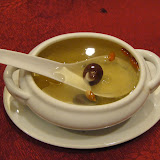
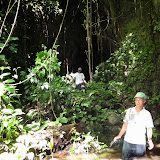
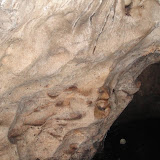
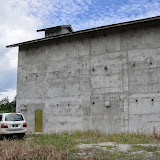
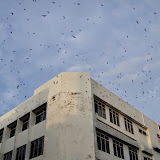

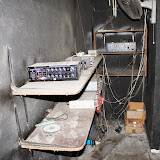
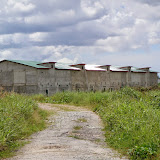


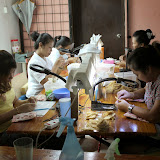


Notes
Introduction The purpose of this paper is to report and analyze on the transformation process of the edible bird’s nest trade in Sarawak, Malaysia. Recently the edible bird’s nest trade has been booming in Malaysia (e.g. Lim & Earl of Cranbrook 2002, Voon 2012, Chew 2013). This influx in trade is influenced by factors including: the Chinese food culture, the Chinese perception of health, the ecological knowledge of local people, and the multi-ethnic network in this area. These characteristics are significant in the trade of edible bird’s nest in Southeast Asian countries, including Sarawak. This paper will analyze the characteristics of the contemporary edible bird’s nest trade in Sarawak from three viewpoints: the commodity chain, ecological knowledge and the ethnic relationship in this area. By considering these three viewpoints, this paper will examine how the edible bird’s nest trade is transforming its nature in the Sarawak region through the introduction of a new method for collecting the edible bird’s nest. Since globalization can no longer be ignored in contemporary world, many scholars in humanities and social sciences have begun to consider how to integrate a global phenomenon into their research. This academic trend has influenced cultural anthropological studies, whose main research method is to conduct fieldwork in relatively small communities. However, anthropologists have long recognized the importance of a relationship between the micro scale communities and the macro scale phenomena prior to globalization studies prospering within the field of humanities and social sciences. Since the 1980s, the worldsystems theory and the articulation theory have influenced socio-cultural anthropological research, with anthropologists seeking to understand their fieldwork date by considering the world-systems theory or transnationalism studies (cf. Lewellen 2002, Kearney 2004). It is not easy for anthropologists to research a large-scale society to enable them to understand their field data. As ethnographic fieldwork in relatively small-scale communities is the main research method for anthropological research, anthropologists are faced with searching for a research framework to articulate their micro-scale ethnographic data and its macro-scale background. Should anthropologists research a large-scale society, such as a world system or a transnational phenomenon; it is necessary for them to consider and understand the interconnectedness between micro level communities in which they conduct their fieldwork and the macro level settings that surround the research site. Some scholars (cf. Marcus 1995, Brettell 2003) whose work include tracing population migration and commodity chain by conducting multi-sited ethnographical methods, can be understood as contributing towards overcoming the above problems. By reflecting on this academic tendency, some studies analyze the characteristics of particular products’ and their trade in world markets by researching not only the commodity chain but also the peculiarity of their ecological environment and the political economy, where the products are produced (e.g. Collins et al. 2000, Wadley 2005, Akamine 2010, West 2014). To understand the extended Chinese network from the local context, such research methodologies are instructive helpful. Utilizing this framework, this paper will report on the edible bird’s nest trade in contemporary Sarawak, Malaysia and discuss how ethnic Chinese in Sarawak have introduced a new method for collecting edible bird’s nest and changed the trade network in this region. To analyze the above issues, the paper will focus on three topics: the transformation of the commodity chain, environmental knowledge of local peoples, and the ethnic relationship in Sarawak. In discussing these issues, the paper will concurrently consider the contemporary characteristics of the edible bird’s nest in Sarawak trade and how the ethnic Chinese and other local people in Sarawak are utilizing a high-biomass natural environment in this region. What is edible bird’s nest? Edible bird’s nest, known as yan wo (燕窝) in Mandarin and sarang burung in Malay, is a rare and expensive Chinese food delicacy. Although the Chinese word yen means swallow, this delicacy is not a swallow’s nest, but a swiftlet’s nest. The swiftest is a biologically different species to the swallow. Among the members of the species, only two groups, which are Aerodrams Maximus and Aerodrams Ficiphagus , build edible nests by using their saliva. It is commonly believed that the swiftlets use sea weed to build their nests, thus their nests also taste like seaweed. While this is a prevalent belief, it is a false assumption as the swiftlets only use their saliva to build their nests. These two species commonly build their nest in limestone caves in inland and coastal areas in tropical Asia (Lim & Earl of Cranbrook 2002). It is unknown when Chinese people began consuming edible bird’s nests as a delicacy. However, some scholars believe that Chinese people already consumed edible bird’s nest during the Tang dynasty. The edible bird’s nest became a popular food in Chinese cuisine from the Ming dynasty, with edible bird’s nest being used as one of the important dishes for the Manchu Han Imperial Feast, which is man han quan xi (满汉全席) in Mandarin, during the Qing dynasty. It has since been a prominent delicacy in Chinese cuisine on Mainland China and overseas within Chinese communities (Lim & Cranbrook 2002, Jordan 2004, Chiang 2011, Zhuan Ye Yan Wo Shang 2011). Edible bird’s nests are rarely produced in China and have been imported from Southeast Asia to China for over centuries (Ismail 2002:45, Chiang 2011:409-410). This remains to be the case today, with Southeast Asian countries being the main place of origin for edible bird’s nests (Marcone 2005:1126). Nowadays edible bird’s nest is considered to be a special regional product of the Southeast Asian region and is sold to overseas tourists of Chinese background. For example, edible bird’s nests are regarded as one of the typical local products of Thailand and sold in the International Airport and in Chinatown in Bangkok. The edible bird’s nest are sold as local delicacies in some shops and consumed as dessert in restaurants or from street venders on Yaowarat Road in Chinatown, a popular touristic destination in Bangkok. In Thailand, both the Thai people and the local Chinese consume the edible bird’s nests. In the same way as Thailand, the edible bird’s nests are traded in Sarawak as a local product too. According to one Chinese businessperson in Kuching, the capital city in Sarawak, the main consumers of the edible bird’s nest in Sarawak are Chinese people from various parts of East and Southeast Asian countries, such as Peninsular Malaysia, Singapore, Hong Kong, Taiwan and the People’s Republic of China. As this paper will explain later, the bird’s nests in Sarawak are not only sold in retail shops to the local customers but also exported to overseas countries such as Hong Kong and the People’s Republic of China. Likewise, shark fin and sea cucumber are also exported, which are regarded as specialty products of the region. The edible bird’s nests in Sarawak are traded through a so-called Chinese trading network, with sellers playing an important role connecting multiple locations and people in and beyond Southeast Asia. In recent time, the structure of the trading network of edible bird’s nest in Southeast Asia, including Sarawak, has changed its nature somewhat. One of the main reasons for this change is the introduction of a new method for collecting the edible bird’s nests in this region. Traditionally edible bird’s nests in Southeast Asian countries were collected in caves. These caves are located in tropical rainforests or in coastal area1. It is quite difficult for Chinese merchants to reach such natural environments, to enter the caves and to collect the bird’s nest in the darkness. However, since a new method for collecting the edible bird’s nest was introduced to Sarawak, it is no longer necessary for the local Chinese people to ask the local indigenous people to collect the nests. Consequently, this new method has changed the conventional ethnic relationship in the area as well as the pattern of the nest’s trade. Traditional trade of edible bird’s nest in Sarawak As mentioned above, the indigenous people collected the edible bird’s nests in Sarawak from caves in the rainforest for centuries. These bird nests collected by the indigenous peoples were bought by other indigenous people or by Chinese middlemen, and then sold to Chinese merchants in cities and towns. Following this some nests were exported overseas to countries such as Hong Kong, Taiwan, China and to Chinatown districts in other countries. This edible bird’s nest trade network partially overlaps with the traditional trade network in interior area of the Borneo Island. Like other parts of Southeast Asia, the indigenous peoples in Borneo have collected jungle products, which are highly valued in the outside world, such as China, India, the Middle East and Europe. These jungle products collected by the indigenous people in inland or upstream areas are mediated through other indigenous people downriver, to merchants in cities and towns. Again these jungle products are exported to other areas and consumed by people in other regions. These products may include animal meat and fur, elephant tusk, ironwood, rattan, aromatic tree, some kinds of resin, and bezoar stones. On the contrary, commercial or industrial products, such as processed food, sugar, salt, porcelain, ornaments, clothing, medicine, hardware have also been brought to the interior areas in the reverse direction. People in tropical rainforests in the Borneo Island have been articulated with the world system by trading these jungle products with people from other areas for centuries (e.g. Chew 1990, Brosius 1995, Wadley 2005). One of these products is the edible bird’s nest (Ismail 2002, Chiang 2011). The indigenous peoples in Borneo do not consume edible bird’s nest by themselves. Whereas the edible bird’s nest is consumed by locals, including non-Chinese, people in Vietnam and Thailand who have long been influenced by Chinese culture, the indigenous peoples in Borneo do not eat edible bird’s nest and only consider it a commodity to sell to Chinese merchants. Although the Chinese are the main buyers of the edible bird’s nest in Sarawak, they do not consume the nests as their daily food because of its high price. The nests are usually consumed on special occasions or used as a valuable present to give to other people. For example, the nests are given as presents to those hospitalized, or those who recently left hospital because the nests are regarded as good for good for health and wellbeing. Moreover, the nests are also used as presents for the elderly on special occasions such as father’s day and mother’s day. Some restaurants in Sarawak serve edible bird’s nest dishes. However, should someone want to eat the edible bird’s nests, it is necessary to make a reservation for the dish before visiting the restaurants. Usually the restaurants do not prepare the bird’s nests regularly because few customers order it. Even for the local Chinese in Sarawak, the edible bird’s nest is regarded as a special dish, not a regular food to consume. However, the edible bird’s nest trade is now booming in Sarawak and many Sarawakians want to enter the market. As mentioned, the edible bird’s nest was collected from caves by indigenous peoples in the inner area of Sarawak. However, some indigenous peoples have collected all the nests in the caves even when the swiflets are incubating their eggs and when young birds are not ready to leave their nests. This has resulted in a decrease in the amount of nests available for harvest (e.g. Chiang 2011:426). As the indigenous people essentially own the caves where the edible bird’s nest it is difficult to regulate their activities. On the other hand, some Chinese middlemen do not collect the nests, which still have eggs or young birds as they try to collect nests sustainably. Traditionally, there was a relatively clear separation in the trading roles of the edible bird’s nest in Sarawak: indigenous peoples own the caves and collect the nests, local Chinese middlemen mediate the trade, and Mainland China imports and consumes them. The indigenous peoples in Borneo, who collect nests in caves in the jungle, have particular ecological knowledge about the swiftlets and the surrounding environment of the caves where swiftlets build their nests. Typical landscapes that produce the nests are limestone caves in the inland area of the jungle. As local Chinese cannot go to the cave and collect the nests by themselves, they have to rely on the indigenous peoples who have the ecological knowledge and ability to work in this area (Ismail 2002:50, Chiang 2011:426). Recent change of edible bird’s nest trade in Sarawak Although the traditional trading network provided a relatively clear role for each ethnic group, this network has been changing its nature recently. Since 1990s, a new method for collecting the edible bird’s nest has emerged from Indonesia to Sarawak. This new method involves the construction of buildings, which look like warehouses that have small gates on its walls. By constructing these buildings, people in Sarawak, especially local Chinese, try to attract swiftlets to enter and to build their nests inside the houses. These buildings are referred to as farm houses, or bird houses in English and called yan wu (燕 屋) in Mandarin. After this method was introduced from Indonesia, it flourished in Sarawak. Thus, the local Chinese in Sarawak do not necessarily go to the indigenous people’s village in the remote areas and obtain edible bird’ nest any more as they can produce the nest by themselves. This method enables the local Chinese to obtain the nests sustainably and to distribute them in large amounts. Since, this initiative, in 2010, the farm house business has boomed in Sarawak. In 1980s, the price of the edible bird’s nest was relatively cheaper than its current price. Furthermore, during this time its supply was also limited. According to one Chinese businessman in Kuching, the price of a raw bird’s nest was about 80 Malaysian Ringgit2 per 1kg in 1980s. But after introducing the farm house method, the supply of edible bird’s nest has increased and so has its price. Nowadays, the price of the raw nest is about 5,000 Malaysia Ringgit per 1kg. At the same time, the demand for the edible bird’s nest in Mainland China has also risen; thus, the edible bird’s nest trade has become a profitable business in Sarawak. These days many Sarawakians, especially of ethnic Chinese, are participating in this business by constructing farm houses. In 1990s following the introduction of the farm house business in Sarawak, the people of Sarawak may not have had enough knowledge in terms of farming and building the farm houses and merely constructed them in their own way. The people built simple farm houses in the hope of attracting swiftlets to nest inside. However, these simple farm houses were not successful in attracting the swiftlets. Gradually, the people in Sarawak improved its methods for attracting the swiftlets, to encourage them to build their nests inside the farm houses. In order to attract the swiftlets and to persuade them to enter, it is necessary to have sufficient knowledge of the swiftlet’s habits and the ecological environment in which it inhabits. Thus, the people in Sarawak developed their knowledge on the swiftlet’s ecology and learnt about methods for attracting them into the farm houses. For example, should a person aim to establish a business in a particular place, they will usually conduct research first by playing a CD, DVD or MP3 recoding of a swiftlet’s cry to attract others and to see whether the swiftles will inhabit the farm house before construction begins. Furthermore, people in Sarawak also conduct research regarding the suitable shape of building in which swiftlets prefer to build their nests. The most popular method to attract swiftlets to these buildings is to use recording mediums, which record the cry of swiftlets. The farm house owners play these recoding mediums to attract swiftlets to their buildings. They also use computer to cut-and-paste favorable parts in these recoded medium and edit favorable version. For example, the farm house owners omit swiftlet’s cries of fearing enemies and keep other cries which are made during nesting or brooding season. The farm house owners also condition inside of their farm houses by adjusting its temperature and humidity by using thermometers and sprinklers. Such methods are crucial to succeed in the farming business. Competition between farmers means that some farm house owners try to keep their farming know-how a secret. Consequently, some farm house owners hire watchmen or use surveillance cameras to keep strangers out and to prevent other from stealing their know-how. Exterminating swiflte’s enemies is another important method for the farm house business. The farm house owners have to drive away or shoot raptors such as hawks and owls. As rats, ants and cockroaches can be enemies for eggs and baby birds, some farm house owners periodically visit their farm houses and exterminate them by using pesticide or rat poison. Besides such technical know-how, the selection of landscape is also important for the farm house business. Traditionally, edible bird’s nest has been collected in limestone caves located in inland area. However, many farm houses in inland area tend to fail to attract swiftlets. According to local people in Sarawak, the most suitable landscapes for farming are peat swan areas, mangrove forests and oil palm plantations in lowland or coastal areas. These landscapes are different from the traditional setting, where indigenous peoples in the inland area harvested nests. As the selection of appropriate landscapes is crucial for the farm house business, Chinese businessmen make an effort to research suitable land in which they will build their farm houses3. As seen above, the farm house business with the new method is not a simple collection of edible bird’s nests anymore. The characteristic of farm house business is a more scientific industry which needs knowledge of swifltet’s habitat and its natural environment which it inhabits. Those who want to engage in this business have to apply their knowledge to attract swiftlets and to harvest the nests. Although the nest collections in the caves are still practiced by indigenous peoples in various parts of Sarawak, the traditional method of nest collection and farm house business method are quite different. The farm house method requires technological know-how. Some shops now specialize in farm house equipment, such as DVD or MP3 players, loudspeakers, sprinklers, humidifiers, and surveillance cameras. Moreover, books and magazines specializing in farm house business are published in Malaysia now. Business people who have succeeded in the business or scholars who have extensive knowledge of the farming industry are invited to have lectures on the farming industry in seminars with high reward. It is possible to say that the farm house business has become one of the centers of public attention for business in contemporary Malaysia, especially in Sarawak. The farm house business has an impact not only on local business trend, but also on the ethnic relationship in Sarawak on which traditional nest’s trade have been based: the indigenous peoples own the caves and collect the nests, while local Chinese mediate in the process and distribution of the nests, and Mainland China import and consume the nests. The new method, which requires scientific ecological knowledge, is changing the traditional ethnic relationship and the commodity chain for the edible bird’s nest in Sarawak. Although traditionally, the indigenous people collected the nests from the caves, the farm house method for collecting the edible bird’s nest has been flourishing in Sarawak. The expansion of the farm house business in Sarawak resulted in an increase in the number of edible bird’s nest. Since the Chinese in Sarawak established the farming business, it is no longer necessary for them to rely on the indigenous people to obtain the nests from the caves in the jungle. The changing pattern of bird’s nest trade occurred by the introduction of new method, which has transformed the local Chinese way of utilizing its natural environment and the ethnic relationship on which a traditional trading network was based upon. It is possible to say that the Chinese in Sarawak have occupied the edible bird’s nest trade ‘from upriver to downriver’ since the introduction of the farm house method. Conclusion The edible bird’s nest trade is not a new business in contemporary Sarawak. The farm house business can be understood as a new way to utilize the natural environment, the multiple ethnic relationships, and commodity chains in this area. As mentioned in this paper, the traditional ethnic relationship and the commodity chain can be summarized as follow: the indigenous peoples own the caves and collect nests, local Chinese middlemen mediate and distribute them, and people in Mainland China or Hong Kong import and consume them. In reality there exist more actors in the trade and the relationship is more complex, thus, the edible bird’s nest trade network should be described as “commodity web”, not a “commodity chain” (cf. Chew 2013:3). The peculiarity of the new method is that it needs more scientific knowledge rather than traditional knowledge, which is practiced by the indigenous people. Although it is questionable whether the indigenous in Sarawak have sustainable knowledge of nest collection4, they know about and are able to work in the natural environment in which the swiftlets build their nests. Before the introduction of this new method, the Chinese traders relied on the indigenous people to obtain the nests from the jungle (Chiang 2011:426). The introduction of this new method enables the Chinese to obtain edible bird’s nests without neither going to the caves in the jungle nor asking the indigenous to go into the caves. The importance of the landscape for nest collection has also changed. Peat swamp areas and mangrove forests are believed to be more favorable for constructing the farm houses, which are geographically different from the lime stone caves in inland areas, where traditional nest collection was conducted. Chinese farm house owners are probing for more scientific knowledge of the swiftlet’s ecology and are using technological equipment to succeed in the farming industry. Although traditional system for harvesting bird’s nest continues to exist, the amount of house nests is increasing in contemporary Sarawak5. The characteristics of the edible bird’s nest trade in contemporary Sarawak can be summarized as follows: ‘from traditional ecological knowledge and practice to scientific ecological knowledge and practices’, or ‘from caves to farm houses’. Of course the contemporary structure of edible bird’s nest in Sarawak has many actors and networks. Thus, it is not possible to over simplify its nature. However, the introduction of the new method for nest collection is transforming the ethnic relationship and environmental knowledge of the people in high-biomass society in Sarawak. In contemporary Sarawak, the characteristics of edible bird’s nest can be understood as not only being rare and expensive delicacies in Chinese food culture, but also as an object which has a complex system of meaning and values. The introduction of the farm house method based upon scientific knowledge, not folk knowledge, is transforming the commodity web, environmental knowledge, and the ethnic relationship in Sarawak. The Chinese food culture, new scientific knowledge and technique plays an important role in reorganizing the trade network which is based on an ethnic relationship and environmental knowledge of the people in this area6.
Notes
1:For example in Thailand seafarer people, such as Moken,
have been engaged in collecting edible bird’s nest in caves off
seashore cliffs and for selling them to other.
2:1 Malaysia Ringgit is equivalent to about 3.3dollars in 2013, while it was about 10 US dollars during 1980s.
3:For example Suzuki reports the construction of a farm house by mentioning her experience to build it with other scholars and local people (Suzuki 2013).
4:Some scholars reported about sustainable nest collection practiced by indigenous peoples and Chinese traders in Borneo Island (Ismail 2002, Chew 2013). However, the overharvesting of nests in caves sometimes results in a decrease of the swiflet’s population in some areas (Chiang 2011).
5:However, the government of the People’s Republic of China (PRC) restricted to import Malaysian edible bird’s nests into their country in 2011 by declaring that the nests contained over the standard level of nitride. Since then it became difficult to export the Malaysian edible bird’s nest to the PRC and Hong Kong and they came down in price. This incident is still influencing the edible bird’s nest trade in Malaysia and the author is planning further research about an ongoing transforming process of the trade in this region.
6:This paper is based on ethnographical research in Sarawak conducted continuously from 2010 to 2014 and financially supported by Grant-in-Aid for Scientific Research (S) and Grantin-Aid for Young Scientists (B). Fieldwork was conducted in several areas in Sarawak especially in Kemena-Jelalong riverine system, and some cities in Sarawak, such as Kuching, Sematan, Bintulu and Miri. The research was also conducted in Hong Kong which is one of the main markets for edible bird’s nest. The fieldwork was conducted with Dr. Daniel Chew, Dr. Motoko Fujita, and Ms. Yu Xin. I am deeply grateful for their support. I also express my sincere gratitude to Dr. Noboru Ishikawa, Dr. Ryoji Soda, Ms. Sonoko Tanaka and Mr. Hideki Nakane for their advice and support during my research. However, the author has full responsibility for this report.
Reference
2:1 Malaysia Ringgit is equivalent to about 3.3dollars in 2013, while it was about 10 US dollars during 1980s.
3:For example Suzuki reports the construction of a farm house by mentioning her experience to build it with other scholars and local people (Suzuki 2013).
4:Some scholars reported about sustainable nest collection practiced by indigenous peoples and Chinese traders in Borneo Island (Ismail 2002, Chew 2013). However, the overharvesting of nests in caves sometimes results in a decrease of the swiflet’s population in some areas (Chiang 2011).
5:However, the government of the People’s Republic of China (PRC) restricted to import Malaysian edible bird’s nests into their country in 2011 by declaring that the nests contained over the standard level of nitride. Since then it became difficult to export the Malaysian edible bird’s nest to the PRC and Hong Kong and they came down in price. This incident is still influencing the edible bird’s nest trade in Malaysia and the author is planning further research about an ongoing transforming process of the trade in this region.
6:This paper is based on ethnographical research in Sarawak conducted continuously from 2010 to 2014 and financially supported by Grant-in-Aid for Scientific Research (S) and Grantin-Aid for Young Scientists (B). Fieldwork was conducted in several areas in Sarawak especially in Kemena-Jelalong riverine system, and some cities in Sarawak, such as Kuching, Sematan, Bintulu and Miri. The research was also conducted in Hong Kong which is one of the main markets for edible bird’s nest. The fieldwork was conducted with Dr. Daniel Chew, Dr. Motoko Fujita, and Ms. Yu Xin. I am deeply grateful for their support. I also express my sincere gratitude to Dr. Noboru Ishikawa, Dr. Ryoji Soda, Ms. Sonoko Tanaka and Mr. Hideki Nakane for their advice and support during my research. However, the author has full responsibility for this report.
Reference
Akamine, Jun(赤嶺淳)
2010『ナマコを歩く:現場から考える生物多様性と文化多様性』新曜社。
(Walking with Trepang: Considering Bio-diversity and Cultural-diversity from the Field.
Shin’yo-sha.)
Arunotai, Narumon
2006 Moken Traditional Knowledge: An Unrecognized Form of Natural Resources Management and
Conservation. International Social Science Journal. 58(187):139-150.
Brettell, Caroline
2003 Anthropology and Migration: Essays on Transnationalism, Ethnicity, and Identity.
58(187):139-150.
Brosius, Peter
1995 Bornean Forest Trade in Historical and Regional Perspective: The Case of Penan Hunter
-Gatherers of Sarawak. In J. Fox (ed.) Society and Non-Timber Forest Products in Tropical Asia.
Honolulu: East-West Center. (Occasional Papers, Environment Series, 19) pp.13-26.
Chew, Daniel
1990 Chinese Pioneers on the Sarawak Frontier, 1841-1941. Singapore: Oxford University Press.
2013 The Edible Bird’s Nest Commodity Chain between Sarawak and East Asia.
Equatorial Biomass Society 7:1-6
Chiang, Bien
2011 Market Price, Labor Input, and Relation of Production in
Sarawak’s Edible Bird’s Nest Trade.
In Eric Tagliacozzo & Wen-Chin Chang (eds.) 2011 Chinese Circulation: Capital, Commodities and
Networks in Southeast Asia Durham and London: Duke University Press. pp. 407-431.
Collins, Jane L., et al (eds.)
2000 Commodities and Globalization: Anthropological Perspectives.
Rowman & Littlefield Pub Inc.
Geertz, Clifford
1973 The interpretation of cultures. New York: Basic Books.
Ismail, Mohamed Yusoff
2002 Sacred Food from the Ancestors: Edible Bird Next Harvesting among the Idahan.
In David Y. H. Wu & Sidney C. H. Cheung (eds.) The Globalization of Chinese Food. London & New
York: RoutledgeCruzon. pp.43-55.
Jordan, David
2004 Globalization and Bird’s Nest Soup. International Development Project Review.
26 (1):97-110.
Kearney, Michael
2004 Changing Fields of Anthropology: From Local to Global. Rowman & Littlefield Pubication.
Lewellen, Ted
2002 The Anthropology of Globalization: Cultural Anthropology Enters the 21st Century.
Praeger Publication.
LLim Chan Koon & Earl of Cranbrook
2002 Swiftlets of Borneo: Builders of Edible Nests. Natural History Publications
Marcone, Massimo R.
2005 Characterization of the Edible Bird’s Nest the “Caviar of the East”. Food Research International
38(2005):1125-1134.
Suzuki, Haruka (鈴木遥)
2013 「ツバメの巣ビジネス成功の秘訣:ツバメを呼び寄せるハウスの建築より」『熱帯バイオマス社会』
第12号、7-10 頁(Method of Succeed in Edible Bird’s Nest Business: The Construction to Attract
Swiftlets.Equatorial Biomass Society (Japanese Version ) 12:7-10.)
Voon Ping Kiong
2012 Bold Entrepreneurs and Uncommon Enterprises: The Malaysian Chinese Experience.
Malaysian Journal of Chinese Studies 1:101-118.
Wadley, Reed L. (ed.)
2005 Histories of the Borneo Environment: Economic, Political and Social Dimensions of Change and
Continuity. Leiden: KITLV Press.
West, Paige
2012 From Modern Production to Imagined Primitive: The Social World of Coffee from Papua New
Guinea. Duke University Press.
Zhuan Ye Yan Wo Shang (ed.) (専業燕窩商 編著)
2011『燕窩大全』香港中薬聯商会有限公司(Complete Work of Edible Bird’s Nest.
Hong Kong Union of Chinese Medicine Shops Limited Company.)

